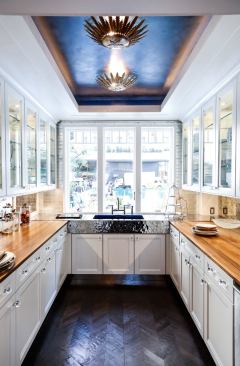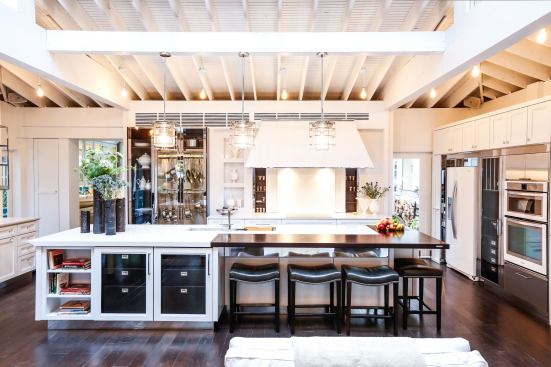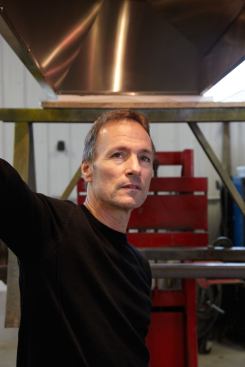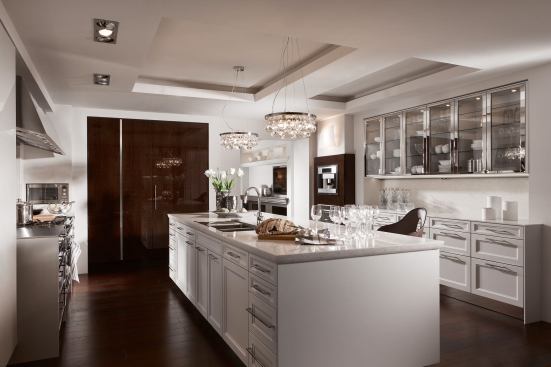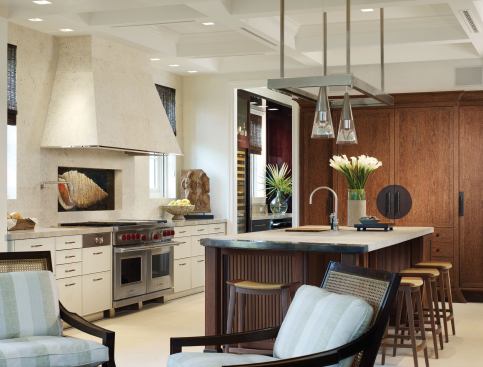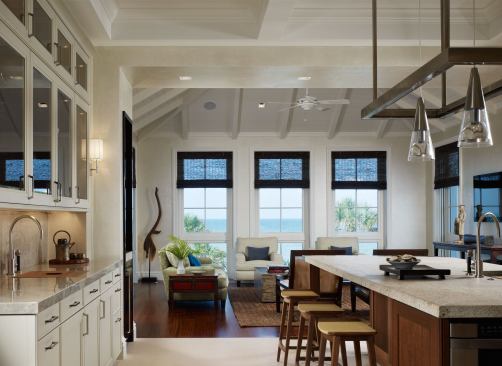Chris Eckert/House Beautiful
In kitchen design, the name Mick De Giulio is synonymous with best of the breed. As the kitchen has evolved to be the most important room in the house, De Giulio has helped the art and craft of kitchen design earn the respect it deserves. And as the craft evolves, so evolves the man: De Giulio now directs two kitchen design showrooms and a metal shop, as well as a design firm (this year, De Giulio Kitchen Design celebrates three decades in business). De Giulio’s practice is a balance of residential and commercial kitchen design, as well as product design for Siematic, Kallista (a Kohler company), and Caesarstone. Recently he talked to us about sweating the details, the most powerful sales tool he possesses, and the importance of longevity.
How did you get started as a kitchen designer?
It was really by chance. My dad was a tool and die maker for the Ford Motor Co. in Detroit, where I was born. When I was 16 years old, he bought a wood shop and we made cupolas for garages. I learned the basics of woodworking, and by the time I was 19, we had gone from cupolas to full-on cabinetmaking. I designed my first kitchen when I was 19 years old, and since then, all I’ve done is design kitchens. I’ve seen the kitchen design industry evolve from a lumberyard business to a design business. From the beginning, I tried to look at kitchens differently—in a more artistic way than just cabinetry. I was completely self-taught. I went to university for one year but had to drop out to help my dad with the shop.
How did you work your way into the high-end market?
I never thought that I wasn’t in the high-end market. Every kitchen that I’ve ever approached has been in the same way; doing the best possible work I could do on the project, looking at the mistakes I made on the last project, and thinking about what could be improved. I never made a leap from the low-end of the business to the high end. It was a continuum.
How do you sell to today’s clients?
Here’s what sells: enthusiasm and the spirit of clients telling you what they want to do. That’s contagious. What’s exciting is the back and forth, where you feed off each other and it just keeps going from there. What sells is when people know that you’re really into their project and 100 percent involved. Who wouldn’t want somebody looking out for them—someone who’s enthused about the opportunities?
Today’s client wants, more than anything, creativity, and what really drives me is coming up with an idea. Being able to say, “We’ve never done this before but it could be really great.” Today’s client wants something that’s special, and that always sells.
How has the recession had an impact on your business?
What happened—even in 2008 and 2009—was that the good people were still available; sometimes more available than before. It was actually a boon to business; we grew more in the past five years than at any other time. Our subs were more available, so we could get to some projects faster and with shorter lead times. I have a drawer full of ideas, so we were able to step out a little bit and experiment with things that we didn’t have time to do before. That helped the business overall. In 2010, I published a book (Kitchen Centric, written with Karen Klages Grace). That’s hard to do when you’re going full force 24 hours a day. I bought a metal fabricating shop, which now enables us to do more work internally.
We have our own artisans and we’ve always installed all of our kitchens, approaching them like a stage set that gets built and then transported. We stage ahead of time, like a rehearsal. A kitchen is the sum of, say, 1,000 parts. Even if 40 aren’t working and the other 960 are okay, you’ve got problems. If you can get that number from 40 to about two, you’re doing well. Staging helps us figure that out ahead of time.
Any advice for kitchen designers just starting out?
One of the most important things you can do for yourself is to stay the course and conquer the hurdles. You reach certain points in your career where it just seems like things are never going to get better. Muscling through that time, though, without making a change in direction is crucial. In longevity, you’re creating more skill sets, tools, and ideas to work with. As time goes on, the more fun it gets, because you have more ideas and thoughts around problem solving; more capabilities. You have more ways to approach each project.
How do you assemble and maintain a top-tier staff?
One of the things I’m proudest of is the longevity of our people. My first hire was in 1985, and he has been with me for 29 years. So many of my staff have been with me for 25 years or more. I feel an obligation to make sure that everyone who works here feels challenged professionally. One of the best notes I ever received was from a woman who has worked with me for 25 years. “I feel like I’ve worked for five different companies because of how we keep changing,” she wrote. People need to feel challenged at every moment; they need to feel like they’re growing. The hard thing is being challenged and feeling like things are off-balance, while still maintaining a positive attitude.
Our world has changed so much in 10, 20 years. You need to look at every day differently. A lot of it is in questioning your process, from operations to design details to IT. It can be something as small as the way your guys are moving cabinets from one end of the building to another. Or a method of making a piece of hardware that’s a continuous channel: The piece is 1/8-inch thick, but why not make it thicker? Or, why aren’t we building a particular cabinet in a simpler way that’s less expensive and has even better detail? How can we streamline IT and processes like confirmations? The best part of being in business is that everything we do can be improved. Everything. That’s exhilarating. You can solve a problem and move on to the next one. There’s always another mountain to climb.
